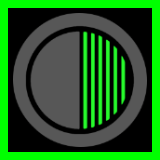Lesson Materials
Video
Learn to do GCS the right way!
So basic but so important – you just have to learn how to do it right.
Introduction
The Glasgow Coma Scale (GCS) was described in 1974 by the English and Scottish neurosurgeons Graham Teasdale and Bryan Jennett (Original GCS paper) as a way to communicate about the level of consciousness of patients with an acute brain injury.
The findings using the scale guide initial decision making and monitor trends in responsiveness that are important in signalling the need for new actions.
Objectives
This is a core competency for nursing and medical staff. We need to get it right so that we’re all speaking the same language and we appreciate when our patient’s condition is changing.
At the end of this module you will be able to:
- Understand a little background behind the GCS
- Perform a GCS assessment reliably and accurately
Development
Comparisons of assessments of different methods in large numbers of patients in the Glasgow Neurosurgical Unit pointed to the merits of a multidimensional approach to assessment.
A short list of terms capable of clear definition and grading in rank order was refined through studies of inter- observer agreement.
Refinement took account of input from junior doctors and nurses and from experienced international colleagues.
The aims in developing the scale were that it should be widely acceptable and should complement, not replace assessments of other neurological functions.
Adoption and spread
The Scale’s simplicity and ease of communication were welcomed in departments caring for patients with acute brain injury from trauma and other causes. Display of the findings on a specially designed chart facilitated detection of clinical changes. Nurses rapidly welcomed the clarity of capture of important trends in the condition of a patient.
With the rapid expansion in the numbers of intensive care units, the arrival of Computerized Tomography (CT) and the popularisation of brain monitoring there was a growth of interest in management of the head injured patient. Research required standardized methods for reporting initial severity and outcome. The Scale therefore became increasingly widely used as the common ‘language’ internationally to communicate about and debate the merits of the different advances in clinical practice and to apply them to caring for patients.
The use of Scale was promoted in 1980 when it was recommended for all types of injured person in the first edition of the Advanced Trauma and Life Support and again in 1988 when the World Federation of Neurosurgical Societies (WFNS) used it in its scale for for grading patients with a subarachnoid haemorrhage. The Scale progressively occupied a central role in clinical guidelines and an integral component of scoring systems for victims of trauma or critical illness.
Forty years after the original description, a review in The Lancet Neurology (2014; 13: 844 – 54) reported that the GCS was in use by neurosurgeons and other disciplines in more than 80 countries worldwide and had been translated into the national language in 74%. The review also noted a continuing rise in the use of the Scale in research reports, making it the most frequently quoted paper in clinical neurosurgery.
Pitfalls and Nuances
The GCS is not perfect and a detailed description of a neurological examination in the patient notes gives much more information.
Other scores like the FOUR score have advantages over the GCS, but GCS is a standardised assessment so we must do it like everywhere else in the world.
Watch the video below and here are a few specific points to address FAQs:
- For the Eyes section, if you need to use pain, it’s OK to use nail pressure as the stimulus, though a central stimulus like a trapezius squeeze is OK too.
- For the Motor section, start with a 2 step command – i.e. squeeze AND let go of my hand, or (probably better) open your mouth AND stick out your tongue. One step commands are insufficient.
- Again for the Motor section, if there’s no response to instructions, then do central painful stimulus. This should first be trapezius squeeze for 10 seconds (or until best motor response); if you get no response, do supraorbital notch pressure (unless contraindicated) for 10 seconds.
- If you get a flexion response and it’s not clear whether this is normal or abnormal flexion, you may then do nail pressure stimulus to distinguish between these two. See the video below at 5m 38s.
- We don’t use the sternal rub as it causes ecchymoses, abrasions, persisting pain and may be considered assault or battery if the intent behind its use is not clear (see this paper for more info)
- Pinching skin is not a standardised pain assessment modality and can also cause bruising and damaged skin.
- The only acceptable peripheral stimulus is nail bed pressure, which is less stimulating than supraorbital notch pressure and can stimulate spinal reflexes which can be misleading.
How to do the GCS Assessment
Compiled by Oliver Flower, Henry Elbourne-Binns and Kelly Harbour
